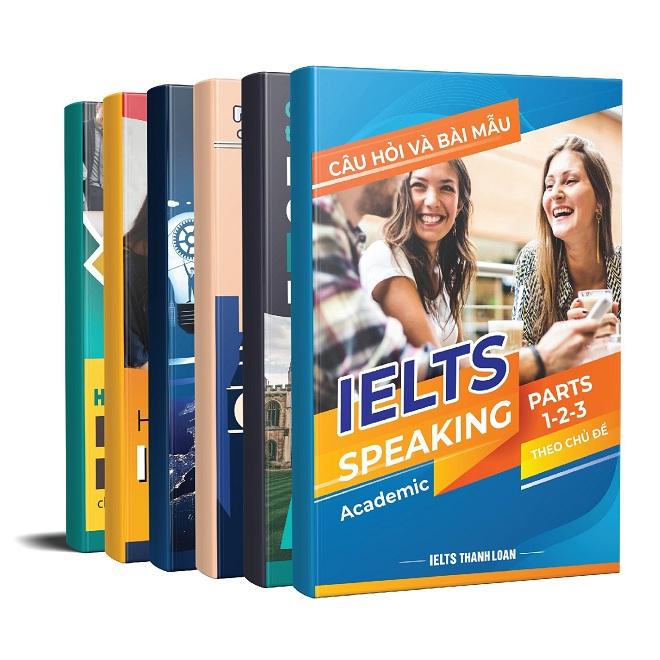Passage 1: The Flavour of Pleasure
No matter how much we talk about tasting our favourite flavours, relishing them really depends on a combined input from our senses that we experience through mouth, tongue and nose. The taste, texture, and feel of food are what we tend to focus on, but most important are the slight puffs of air as we chew our food – what scientists call “retronasal smell” (Q1).
- relish something /ˈrelɪʃ/ (verb): thưởng thức
- texture /ˈtekstʃə(r)/ (noun): kết cấu (của thức ăn được cảm nhận trong miệng)
Dù chúng ta có nói nhiều như thế nào về việc nếm hương vị yêu thích của mình, việc thưởng thức chúng thực sự phụ thuộc ở đầu vào kết hợp từ các giác quan mà chúng ta trải nghiệm qua miệng, lưỡi và mũi. Mùi vị, kết cấu và cảm giác của thức ăn là những gì chúng ta có xu hướng tập trung vào, nhưng quan trọng nhất là những luồng không khí nhè nhẹ khi chúng ta nhai thức ăn – cái mà các nhà khoa học gọi là “mùi vị tiền”.
Certainly, our mouths and tongues have taste buds, which are receptors for the five basic flavours: sweet, salty, sour, bitter, and umami, or what is more commonly referred to as savoury (Q2). But our tongues are inaccurate instruments as far as flavour is concerned. They evolved to recognise only a few basic tastes in order to quickly identify toxins, which in nature are often quite bitter or acidly sour (Q3).
- acidly /ˈæsɪdli/ (adv): gắt
- sour /ˈsaʊə(r)/ (adj): chua
Chắc chắn, miệng và lưỡi của chúng ta có các chồi vị giác, là cơ quan tiếp nhận 5 hương vị cơ bản: ngọt, mặn, chua, đắng và umami, hay còn được gọi là vị ngọt dịu. Nhưng lưỡi của chúng ta là công cụ không chính xác về hương vị. Chúng tiến hóa để chỉ nhận biết một số vị cơ bản nhằm nhanh chóng xác định các chất độc, trong tự nhiên thường khá đắng hoặc chua.
All the complexity, nuance, and pleasure of flavour come from the sense of smell operating in the back of the nose. It is there that a kind of alchemy occurs when we breathe up and out the passing whiffs of our chewed food. Unlike a hound’s skull with its extra-long nose, which evolved specifically to detect external smells, our noses have evolved to detect internal scents (Q4). Primates specialise in savouring the many millions of flavour combinations that they can create for their mouths.
- nuance /ˈnjuːɑːns/ (noun): sắc thái
- skull /skʌl/ (noun): hộp sọ
- detect something /dɪˈtekt/ (verb): phát hiện
Tất cả sự phức tạp, sắc thái và khoái cảm của hương vị đều đến từ khứu giác hoạt động ở phía sau mũi. Ở đó, một loại giả kim thuật xảy ra khi chúng ta hít vào và thở ra từ thức ăn đã nhai của chúng ta. Không giống như hộp sọ của chó săn với chiếc mũi cực dài, được phát triển đặc biệt để phát hiện mùi bên ngoài, mũi của chúng ta đã phát triển để phát hiện mùi hương bên trong. Các loài linh trưởng chuyên thưởng thức hàng triệu sự kết hợp hương vị mà chúng có thể tạo ra cho miệng.
Taste without retronasal smell is not much help in recognising flavour. Smell has been the most poorly understood of our senses and only recently has neuroscience, led by Yale University’s Gordon Shepherd, begun to shed light on its workings. Shepherd has come up with the term ‘neurogastronomy’ to link the disciplines of food science, neurology, psychology, and anthropology with the savoury elements of eating, one of the most enjoyed of human experiences (Q5).
- shed light on something (idiom): làm sáng tỏ
- come up with something (phrasal verb): nghĩ ra
Hương vị không có mùi ngọt dịu không giúp ích nhiều trong việc nhận biết hương vị. Khứu giác là giác quan chúng ra có ít hiểu biết về nhất và chỉ gần đây khoa học thần kinh, dẫn đầu bởi Gordon Shepherd của Đại học Yale, mới bắt đầu làm sáng tỏ hoạt động của nó. Shepherd đã đưa ra thuật ngữ ‘neurogastronomy’ để liên kết các ngành khoa học thực phẩm, thần kinh học, tâm lý học và nhân chủng học với các yếu tố mặn của việc ăn uống, một trong những trải nghiệm thú vị nhất của con người.
In many ways, he is discovering that smell is rather like face recognition. The visual system detects patterns of light and dark and, building on experience, the brain creates a spatial map (Q6). It uses this to interpret the interrelationship of the patterns and draw conclusions that allow us to identify people and places. In the same way, we use patterns and ratios to detect both new and familiar flavours.
- interpret something /ɪnˈtɜːprət/ (verb): giải thích
- ratio /ˈreɪʃiəʊ/ (noun): tỉ lệ
Theo nhiều cách, ông ấy phát hiện ra rằng mùi giống như nhận dạng khuôn mặt. Hệ thống thị giác phát hiện các dạng ánh sáng và bóng tối và dựa trên kinh nghiệm, não bộ sẽ tạo ra một bản đồ không gian. Nó sử dụng điều này để giải thích mối quan hệ qua lại của các mẫu và đưa ra kết luận cho phép chúng ta xác định con người và địa điểm. Theo cách tương tự, chúng ta sử dụng các dạng mẫu và tỷ lệ để phát hiện hương vị cả mới và quen thuộc.
As we eat, specialised receptors in the back of the nose detect the air molecules in our meals (Q8). From signals sent by the receptors, the brain understands smells as complex spatial patterns. Using these, as well as input from the other senses, it constructs the idea of specific flavours (Q9). This ability to appreciate specific aromas turns out to be central to the pleasure we get from food, much as our ability to recognise individuals is central to the pleasures of social life (Q7). The process is so embedded in our brains that our sense of smell is critical to our enjoyment of life at large. Recent studies show that people who lose the ability to smell become socially insecure, and their overall level of happiness plummets.
- construct something /kənˈstrʌkt/ (verb): xây dựng
- at large (idiom): nhìn chung
- insecure /ˌɪnsɪˈkjʊə(r)/ (adj): tự ti, không an toàn
- plummet /ˈplʌmɪt/ (verb): giảm sâu
Khi chúng ta ăn, các thụ thể chuyên biệt ở phía sau mũi sẽ phát hiện các phân tử không khí trong bữa ăn của chúng ta. Từ các tín hiệu được gửi bởi các cơ quan thụ cảm, não bộ hiểu mùi như là các mô hình không gian phức tạp. Sử dụng những thứ này, cũng như đầu vào từ các giác quan khác, nó xây dựng ý tưởng về các hương vị cụ thể. Khả năng đánh giá các hương liệu cụ thể này hóa ra lại là trung tâm của niềm vui mà chúng ta nhận được từ thức ăn, cũng giống như khả năng nhận biết cá nhân của chúng ta là trung tâm của thú vui của đời sống xã hội. Quá trình này ăn sâu vào não bộ của chúng ta đến mức khứu giác rất quan trọng đối với việc tận hưởng cuộc sống của chúng ta nói chung. Các nghiên cứu gần đây cho thấy những người mất khả năng ngửi trở nên bất an về mặt xã hội và mức độ hạnh phúc nói chung của họ giảm mạnh.
Working out the role of smell in flavour interests food scientists, psychologists, and cooks alike. The relatively new discipline of molecular gastronomy, especially, relies on understanding the mechanics of aroma to manipulate flavour for maximum impact. In this discipline, chefs use their knowledge of the chemical changes that take place during cooking to produce eating pleasures that go beyond the “ordinary”.
- work out something (phrasal verb): tìm ra, hiểu được
- aroma /əˈrəʊmə/ (noun): mùi hương dễ chịu
Việc tìm ra vai trò của khứu giác đối với hương vị khiến các nhà khoa học thực phẩm, nhà tâm lý học và đầu bếp quan tâm. Đặc biệt, ngành học tương đối mới của ẩm thực phân tử dựa vào sự hiểu biết về cơ chế của mùi thơm để điều khiển hương vị nhằm tạo ra tác động tối đa. Trong ngành học này, các đầu bếp sử dụng kiến thức của họ về những thay đổi hóa học diễn ra trong quá trình nấu ăn để tạo ra những thú vui ăn uống vượt ra ngoài những trải nghiệm “tầm thường”.
However, whereas molecular gastronomy is concerned primarily with the food or “smell” molecules, neurogastronomy is more focused on the receptor molecules and the brain’s spatial images for the smell. Smell stimuli form what Shepherd terms “odour objects”, stored as memories (Q10), and these have a direct link with our emotions. The brain creates images of unfamiliar smells by relating them to other more familiar smells. Go back in history and this was part of our survival repertoire; like most animals, we drew on our sense of smell, when visual information was scarce, to single out prey (Q11).
- draw on something (phrasal verb): sử dụng, dựa vào
- single out something (phrasal verb): tìm ra, nhận diện
Tuy nhiên, trong khi khoa học ẩm thực phân tử chủ yếu quan tâm đến thức ăn hoặc các phân tử “khứu giác”, thì khoa học thần kinh tập trung nhiều hơn vào các phân tử thụ thể và hình ảnh không gian của não đối với khứu giác. Các tác nhân kích thích khứu giác hình thành cái mà Shepherd gọi là “tác nhân mùi”, được lưu giữ dưới dạng ký ức, và chúng có mối liên hệ trực tiếp với cảm xúc của chúng ta. Bộ não tạo ra hình ảnh của những mùi lạ bằng cách liên hệ chúng với những mùi khác quen thuộc hơn. Quay trở lại lịch sử và đây là một phần của tiết mục sinh tồn của chúng ta; giống như hầu hết các loài động vật, chúng ta dựa vào khứu giác của mình, khi thông tin thị giác khan hiếm, để tìm ra con mồi.
Thus the brain’s flavour-recognition system is a highly complex perceptual mechanism that puts all five senses to work in various combinations. Visual and sound cues contribute, such as crunching, as does touch, including the texture and feel of food on our lips and in our mouths. Then there are the taste receptors, and finally, the smell, activated when we inhale. The engagement of our emotions can be readily illustrated when we picture some of the wide-ranging facial expressions that are elicited by various foods – many of them hard-wired into our brains at birth. Consider the response to the sharpness of lemon and compare that with the face that is welcoming the smooth wonder of chocolate (Q12).
- inhale /ɪnˈheɪl/ (verb): hít vào
- elicit something /ɪˈlɪsɪt/ (verb): giành được, lấy được
- hard-wired /ˌhɑːdˈwaɪəd/ (adj): lập trình sẵn, bản năng, bẩm sinh
Do đó, hệ thống nhận biết hương vị của não là một cơ chế tri giác rất phức tạp, đặt cả năm giác quan hoạt động theo nhiều cách khác nhau. Các dấu hiệu hình ảnh và âm thanh đóng góp, chẳng hạn như tiếng giòn, cũng như khi chạm vào, bao gồm kết cấu và cảm giác của thức ăn trên môi và trong miệng của chúng ta. Sau đó là các thụ thể vị giác, và cuối cùng là khứu giác, được kích hoạt khi chúng ta hít vào. Sự gắn kết cảm xúc của chúng ta có thể dễ dàng được minh họa khi chúng ta hình dung ra một số biểu hiện trên khuôn mặt đa dạng được gợi ra bởi nhiều loại thức ăn khác nhau – nhiều trong số chúng đã đi vào não bộ của chúng ta khi mới sinh ra. Hãy xem xét phản ứng của chúng ta với vị chua loét của chanh và so sánh phản ứng đó với khuôn mặt đang chào đón những miếng sô cô la mềm mại tan trong miệng.
The flavour-sensing system, ever receptive to new combinations, helps to keep our brains active and flexible. It also has the power to shape our desires and ultimately our bodies. On the horizon, we have the positive application of neurogastronomy: manipulating flavour to curb our appetites (Q13).
- on the horizon /həˈraɪzn/ (idiom): sắp diễn ra
- curb something /kɜːb/ (verb): hạn chế
- appetite /ˈæpɪtaɪt/ (noun): cảm giác thèm ăn
Hệ thống cảm nhận hương vị, luôn tiếp thu những kết hợp mới, giúp giữ cho bộ não của chúng ta hoạt động và linh hoạt. Nó cũng có sức mạnh để hình thành mong muốn của chúng ta và cuối cùng là cơ thể của chúng ta. Rõ ràng sắp tới đây, chúng ta có thể có những ứng dụng tích cực của mô học thần kinh: điều khiển hương vị để kiềm chế sự thèm ăn của chúng ta.
Questions 1-5: Complete the notes below. Write NO MORE THAN TWO WORDS from the passage.
1. According to scientists, the term ……………………… characterises the most critical factor in appreciating flavour.
> The taste, texture, and feel of food are what we tend to focus on, but most important (~ the most critical factor) are the slight puffs of air as we chew our food – what scientists call “retronasal smell”.
> Đáp án: retronasal smell
2. ‘Savoury’ is a better-known word for ………………………
> umami, or what is more commonly referred to (~ a better known word for) as savoury
> Đáp án: umami
3. The tongue was originally developed to recognise the unpleasant taste of ………………………
> But our tongues are inaccurate instruments as far as flavour is concerned. They evolved to recognise (~ developed to recognise) only a few basic tastes in order to quickly identify toxins, which in nature are often quite bitter or acidly sour (~ unpleasant taste).
> Đáp án: toxins
4. Human nasal cavities recognize ……………………… much better than external ones.
> Unlike a hound’s skull with its extra-long nose, which evolved specifically to detect external smells (~ external ones), our noses (~ human cavities) have evolved to detect (~ recognize) internal scents.
> Đáp án: internal scents
5. Gordon Shepherd uses the word ‘neurogastronomy’ to draw together a number of ……………………… related to the enjoyment of eating.
> Shepherd has come up with the term ‘neurogastronomy’ to link (~ draw together) the disciplines of food science, neurology, psychology, and anthropology with the savoury elements of eating, one of the most enjoyed of human experiences (~ related to the enjoyment of eating).
> Đáp án: disciplines
Question 6-9: Complete the notes below, Write NO MORE THAN TWO WORDS from the passage.
| Face recognition
Patterns of dark and light are used to put together a 6………………….. The brain identifies faces. Facial recognition is key to our enjoyment of 7……………………… |
6. The visual system detects patterns of light and dark and, building on experience, the brain creates (~ put together) a spatial map.
> Đáp án: spatial map
7. Our ability to recognise individuals (~ facial recognition) is central to the pleasures of (~ key to our enjoyment of) social life.
> Đáp án: social life
| Smell
Receptors recognise the 8………………… in food. The brain identifies certain 9……………………. Smell is key to our enjoyment of food. |
8. As we eat, specialised receptors in the back of the nose detect (~ recognise) the air molecules in our meals (~ in food).
> Đáp án: air molecules
9. From signals sent by the receptors, the brain understands smells as complex spatial patterns. Using these, as well as input from the other senses, it constructs the idea of specific (~ identifies certain) flavours.
> Đáp án: flavours
Questions 10-13: Answer the questions below. Choose NO MORE THAN ONE WORD from the text for each answer.
10. In what form does the brain store ‘odour objects’?
> Smell stimuli form what Shepherd terms “odour objects“, stored as memories.
> Đáp án: memories
11. When seeing was difficult, what did we use our sense of smell to find?
> We drew on our sense of smell, when visual information was scarce (~ when seeing was difficult), to single out (~ find) prey.
> Đáp án: prey
12. Which food item illustrates how flavour and positive emotion are linked?
> Consider the response to the sharpness of lemon (~ negative emotion) and compare that with the face that is welcoming the smooth wonder (~ positive emotion) of chocolate.
> Đáp án: chocolate
13. What could be controlled in the future through flavour manipulation?
> On the horizon (~ in the future), we have the positive application of neurogastronomy: manipulating flavor (~ flavor manipulation) to curb (~ controlled) our appetites.
> Đáp án: appetites
Tham khảo Khóa Học IELTS Online qua ZOOM cùng IELTS Thanh Loan
IELTS Thanh Loan với 10 năm kinh nghiệm giảng dạy tự tin mang đến khóa học chất lượng nhất, phương pháp giảng dạy cô đọng dễ hiểu, giáo trình tự biên soạn cho lộ trình từ cơ bản đến luyện đề chuyên sâu. Đặc biệt, học viên luôn được quan tâm sát sao nhất, hỗ trợ không giới hạn, thúc đẩy kỷ luật học tập tốt để đạt mục tiêu.

Passage 2: Dawn of the robots
They’re already here – driving cars, vacuuming carpets and feeding hospital patients. They may not be walking, talking, human-like sentient beings, but they are clever… and a little creepy.
- sentient /ˈsentiənt/ (adj): có tri giác
- creepy /ˈkriːpi/ (adj): rung rợn
Chúng đã xuất hiện rồi – lái xe ô tô, hút bụi thảm và cho bệnh nhân bệnh viện ăn. Chúng có thể không biết đi, biết nói, có tri giác giống như con người, nhưng chúng rất thông minh … và có một chút rùng rợn.
A
At first sight it looked like a typical suburban road accident. A Land Rover approached a Chevy Tahoe estate car that had stopped at a kerb; the Land Rover pulled out and tried to pass the Tahoe just as it started off again. There was a crack of fenders and the sound of paintwork being scraped, the kind of minor mishap that occurs on roads thousands of times every day. Normally drivers get out, gesticulate, exchange insurance details and then drive off. But not on this occasion. No one got out of the cars for the simple reason that they had no humans inside them (Q14); the Tahoe and Land Rover were being controlled by computers competing in November’s DARPA (the U.S. Defence Advanced Research Projects Agency) Urban Challenge.
- kerb /kɜːb/ (noun): lề đường
- pull out (phrasal verb): tạt sang (phần đường khác)
- mishap /ˈmɪshæp/ (noun): tai nạn, vận đen nhỏ
Thoạt nhìn, nó giống như một vụ tai nạn điển hình ở vùng ngoại ô. Một chiếc Land Rover tiến đến gần một chiếc ô tô của Chevy Tahoe đang dừng ở lề đường; chiếc Land Rover tạt ngang và cố gắng vượt qua Tahoe ngay khi nó bắt đầu trở lại. Có một tiếng cạch của chắn bùn và âm thanh của lớp sơn bị cạo, một loại rủi ro nhỏ xảy ra trên đường hàng nghìn lần mỗi ngày. Thông thường các tài xế ra ngoài, kiểm tra kỹ lưỡng, trao đổi chi tiết bảo hiểm và sau đó lái xe đi. Nhưng không phải lúc này. Không ai ra khỏi xe vì lý do đơn giản là bên trong không có người; Tahoe và Land Rover đang được điều khiển bởi các máy tính trong cuộc thi Thử thách đô thị của DARPA (Cơ quan Dự án Nghiên cứu Tiên tiến Quốc phòng Hoa Kỳ) vào tháng 11.
B
The idea that machines could perform to such standards is startling. Driving is a complex task that takes humans a long time to perfect. Yet here, each car had its on-board computer loaded with a digital map and route plans (Q24), and was instructed to negotiate busy roads; differentiate between pedestrians and stationary objects; determine whether other vehicles were parked or moving off; and handle various parking manoeuvres, which robots turn out to be unexpectedly adept at. Even more striking was the fact that the collision between the robot Land Rover, built by researchers at the Massachusetts Institute of Technology, and the Tahoe, fitted out by Cornell University Artificial Intelligence (AI) experts, was the only scrape in the entire competition. Yet only three years earlier, at DARPA’s previous driverless car race, every robot competitor – directed to navigate across a stretch of open desert – either crashed or seized up before getting near the finishing line (Q15).
- startling /ˈstɑːtlɪŋ/ (adj): gây giật mình, ngạc nhiên
- negotiate something /nɪˈɡəʊʃieɪt/ (verb): vượt qua (một con đường)
- adept at something /əˈdept/ (adj): lão luyện, thành thạo
- collision /kəˈlɪʒn/ (noun): tai nạn đâm xe
- seize up /siːz/ (phrasal verb): bị hỏng động cơ
Ý tưởng rằng máy móc có thể thực hiện theo các tiêu chuẩn như vậy thật đáng ngạc nhiên. Lái xe là một công việc phức tạp, con người mất nhiều thời gian để hoàn thiện. Tuy nhiên, ở đây, mỗi chiếc xe đều có máy tính trên xe với một bản đồ kỹ thuật số và các bản đồ lộ trình, và được hướng dẫn cách vượt qua những con đường đông đúc; phân biệt đâu là người đi bộ và đâu là vật đứng yên; xác định xem các phương tiện khác đã đỗ lại hay đang di chuyển; và xử lý các thao tác đỗ xe khác nhau, mà robot hóa ra lại thành thạo một cách bất ngờ. Đáng chú ý hơn nữa là vụ va chạm giữa robot Land Rover do các nhà nghiên cứu tại Viện Công nghệ Massachusetts chế tạo và Tahoe do các chuyên gia Trí tuệ nhân tạo (AI) của Đại học Cornell trang bị, là vụ va chạm duy nhất trong toàn bộ cuộc thi. Tuy nhiên, chỉ ba năm trước đó, tại cuộc đua xe ô tô không người lái trước đó của DARPA, mọi đối thủ cạnh tranh bằng robot – được hướng dẫn di chuyển qua một đoạn sa mạc rộng – hoặc bị rơi hoặc động cơ gặp trục trặc trước khi đến gần vạch đích.
C
It is a remarkable transition that has clear implications for the car of the future. More importantly, it demonstrates how robotics sciences and Artificial Intelligence have progressed in the past few years – a point stressed by Bill Gates, the Microsoft boss who is a convert to these causes. ‘The robotics industry is developing in much the same way the computer business did 30 years ago,’ he argues (Q16). As he points out, electronics companies make toys that mimic pets and children with increasing sophistication. I can envision a future in which robotic devices will become a nearly ubiquitous part of our day-to-day lives,’ says Gates. ‘We may be on the verge of a new era, when the PC will get up off the desktop and allow us to see, hear, touch and manipulate objects in places where we are not physically present.’
- mimic something /ˈmɪmɪk/ (verb): mô phỏng, bắt chước
- envision something /ɪnˈvɪʒn/ (verb): mường tượng
- ubiquitous /juːˈbɪkwɪtəs/ (adj): có ở khắp nơi
- on the verge of something (prepositional phrase): bên bờ vực, sắp
Đó là một sự chuyển đổi đáng chú ý có ý nghĩa rõ ràng đối với chiếc xe của tương lai. Quan trọng hơn, nó chứng minh khoa học người máy và Trí tuệ nhân tạo đã tiến bộ như thế nào trong vài năm qua – một điểm được Bill Gates, ông chủ của Microsoft, người đã chuyển hướng đến những nguyên nhân này nhấn mạnh. Ông lập luận: “Ngành công nghiệp người máy đang phát triển giống như cách ngành kinh doanh máy tính đã làm cách đây 30 năm. Như ông chỉ ra, các công ty điện tử sản xuất đồ chơi mô phỏng vật nuôi và trẻ em ngày càng tinh vi. Gates cho biết: “Tôi có thể hình dung ra một tương lai trong đó các thiết bị robot sẽ trở thành một phần gần như có mặt ở mọi nơi trong cuộc sống hàng ngày của chúng ta”. “Chúng ta có thể đang chuẩn bị sang một kỷ nguyên mới, khi PC sẽ không chỉ đơn thuần là hoạt động trên màn hình nền và cho phép chúng ta nhìn, nghe, chạm và thao tác các đối tượng ở những nơi mà chúng ta không có mặt trên thực tế.”
D
What is the potential for robots and computers in the near future? “The fact is we still have a way to go before real robots catch up with their science fiction counterparts”, Gates says (Q22). So what are the stumbling blocks? One key difficulty is getting robots to know their place. This has nothing to do with class or etiquette, but concerns the simple issue of positioning. Humans orient themselves with other objects in a room very easily. Robots find the task almost impossible. ‘Even something as simple as telling the difference between an open door and a window can be tricky for a robot,’ says Gates (Q17). This has, until recently, reduced robots to fairly static and cumbersome roles.
- stumbling block /ˈstʌmblɪŋ blɒk/ (noun): khó khăn, chướng ngại vật
- etiquette /ˈetɪkət/ (noun): phép tắc hành xử
- cumbersome /ˈkʌmbəsəm/ (adj): cồng kềnh
Tiềm năng cho robot và máy tính trong tương lai gần là gì? “Thực tế là chúng ta vẫn còn một con đường để đi trước khi các robot thực sự bắt kịp với robot trong khoa học viễn tưởng” Gates nói. Vậy những trở ngại là gì? Một khó khăn chính là làm cho robot biết vị trí của chúng. Điều này không liên quan gì đến đẳng cấp hay phép xã giao mà chỉ liên quan đến vấn đề đơn giản là định vị. Con người định hướng bản thân tương quan với các đồ vật khác trong phòng rất dễ dàng. Robot coi nhiệm vụ này gần như bất khả thi. Gates nói: “Ngay cả những thứ đơn giản như phân biệt sự khác biệt giữa cửa mở và cửa sổ cũng có thể khó khăn đối với một con robot. Điều này, cho đến gần đây, đã đưa robot xuống các vai trò không cần di chuyển và khá cồng kềnh.
E
For a long time, researchers tried to get round the problem by attempting to re-create the visual processing that goes on in the human cortex. However, that challenge has proved to be singularly exacting and complex. So scientists have turned to simpler alternatives: ‘We have become far more pragmatic in our work,’ says Nello Cristianini, Professor of Artificial Intelligence at the University of Bristol in England and associate editor of the Journal of Artificial Intelligence Research. ‘We are no longer trying to re-create human functions. Instead, we are looking for simpler solutions with basic electronic sensors, for example (Q21). This approach is exemplified by vacuuming robots such as the Electrolux Trilobite. The Trilobite scuttles around homes emitting ultrasound signals to create maps of rooms, which are remembered for future cleaning (Q25). Technology like this is now changing the face of robotics, says philosopher Ron Chrisley, director of the Centre for Research in Cognitive Science at the University of Sussex in England.
- get round (phrasal verb): vượt qua, giải quyết
- exacting /ɪɡˈzæktɪŋ/ (adj): đòi hỏi nỗ lực và cẩn thận
- pragmatic /præɡˈmætɪk/ (adj): thực tế, thực dụng
Trong một thời gian dài, các nhà nghiên cứu đã cố gắng giải quyết vấn đề bằng cách cố gắng tạo lại quá trình xử lý hình ảnh diễn ra trong vỏ não người. Tuy nhiên, thách thức đó đã được chứng minh là đòi hỏi rất nhiều thứ và phức tạp. Vì vậy, các nhà khoa học đã chuyển sang các giải pháp thay thế đơn giản hơn: ‘Chúng tôi đã trở nên thực dụng hơn rất nhiều trong công việc của mình,’ Nello Cristianini, Giáo sư Trí tuệ Nhân tạo tại Đại học Bristol ở Anh và là phó tổng biên tập của Tạp chí Nghiên cứu Trí tuệ Nhân tạo, cho biết. ‘Chúng tôi không còn cố gắng tái tạo các chức năng của con người. Thay vào đó, chúng tôi đang tìm kiếm các giải pháp đơn giản hơn với các cảm biến điện tử cơ bản chẳng hạn. Phương pháp này được ví dụ bằng các robot hút bụi như Electrolux Trilobite. Trilobite di chuyển xung quanh các ngôi nhà phát ra tín hiệu siêu âm để tạo bản đồ các phòng, được ghi nhớ để chúng có thể thực hiện nhiệm vụ dọn dẹp phòng trong tương lai. Nhà triết học Ron Chrisley, Giám đốc Trung tâm Nghiên cứu Khoa học Nhận thức tại Đại học Sussex ở Anh, cho biết công nghệ như thế này hiện đang thay đổi bộ mặt của người máy.
F
Last year, a new Hong Kong restaurant, Robot Kitchen, opened with a couple of sensor-laden humanoid machines directing customers to their seats. Each possesses a touch-screen on which orders can be keyed in (Q26). The robot then returns with the correct dishes. In Japan, University of Tokyo researchers recently unveiled a kitchen ‘android’ that could wash dishes, pour tea and make a few limited meals. The ultimate aim is to provide robot home helpers for the sick and the elderly, a key concern in a country like Japan where 22 per cent of the population is 65 or older. Over US$1 billion a year is spent on research into robots that will be able to care for the elderly. ‘Robots first learn basic competence – how to move around a house without bumping into things. Then we can think about teaching them how to interact with humans,’ Chrisley said (Q23). Machines such as these take researchers into the field of socialised robotics: how to make robots act in a way that does not scare or offend individuals. ‘We need to study how robots should approach people, how they should appear. That is going to be a key area for future research,’ adds Chrisles (Q20).
- humanoid /ˈhjuːmənɔɪd/ (adj): hình người
- unveil something /ˌʌnˈveɪl/ (verb): giới thiệu, ra mắt
- competence /ˈkɒmpɪtəns/ (noun): năng lực, kỹ năng
Năm ngoái, một nhà hàng mới ở Hồng Kông, Robot Kitchen, đã khai trương với một vài cỗ máy hình người đầy cảm biến hướng khách hàng đến chỗ ngồi. Mỗi con sở hữu một màn hình cảm ứng để có thể nhập lệnh. Sau đó, robot sẽ quay lại với các món ăn chính xác. Tại Nhật Bản, các nhà nghiên cứu của Đại học Tokyo gần đây đã tiết lộ một ‘android’ nhà bếp có thể rửa bát, rót trà và nấu một vài bữa ăn. Mục đích cuối cùng là cung cấp người giúp việc nhà bằng robot cho người bệnh và người già, một mối quan tâm chính ở một quốc gia như Nhật Bản, nơi 22% dân số từ 65 tuổi trở lên. Hơn 1 tỷ đô la Mỹ mỗi năm được chi cho nghiên cứu robot có thể chăm sóc người già. ‘Đầu tiên, rô bốt học kỹ năng cơ bản – cách di chuyển xung quanh nhà mà không va vào mọi thứ. Sau đó, chúng tôi có thể nghĩ đến việc dạy chúng cách tương tác với con người, ‘Chrisley nói. Những máy móc như thế này đưa các nhà nghiên cứu vào lĩnh vực rô bốt xã hội hóa: làm thế nào để rô bốt hoạt động theo cách không gây sợ hãi hoặc xúc phạm cá nhân. ‘Chúng ta cần nghiên cứu cách thức robot tiếp cận con người, cách chúng xuất hiện. Đó sẽ là một lĩnh vực quan trọng cho nghiên cứu trong tương lai, ‘Chrisles cho biết thêm.
Xem thêm:
- Giải Reading Official Guide to IELTS Test 1
- Giải Reading Official Guide to IELTS Test 2
- Giải Reading Official Guide to IELTS Test 3
- Giải Reading Official Guide to IELTS Test 4
- Giải Reading Official Guide to IELTS Test 5
- Giải Reading Official Guide to IELTS Test 6
- Giải Reading Official Guide to IELTS Test 7
- Giải Reading Official Guide to IELTS Test 8
Questions 14-19: The text on the following pages has six paragraphs, A-F. Choose the correct heading for each paragraph from the list of headings (i-ix) below.
List of Headings
|
14 Paragraph A
> At first sight, it looked like a typical suburban road accident… Normally drivers get out, gesticulate, exchange insurance details, and then drive off (~ what it seemed to be). But not on this occasion. No one got out of the cars for the simple reason that they had no humans inside them.
> Đáp án: v. Not what it seemed to be
15 Paragraph B
> The collision was the only scrape (~ a significant improvement) in the entire competition. Yet only three years earlier, at DARPA’s previous driverless car race (~ last time), every robot competitor – directed to navigate across a stretch of open desert – either crashed or seized up before getting near the finishing line.
> Đáp án: ii. A significant improvement on last time
16 Paragraph C
> ‘The robotics industry is developing in much the same way (~ following the pattern) the computer business did 30 years ago (~ an earlier development),’ he argues.
> Đáp án: viii. Following the pattern of an earlier development
17 Paragraph D
> Humans orient themselves with other objects in a room very easily. Robots find the task almost impossible. ‘Even something as simple as telling the difference between an open door and a window can be tricky for a robot,’ (~ the reason why robots rarely move) says Gates.
> Đáp án: vii. The reason why robots rarely move
18 Paragraph E
> So scientists have turned to simpler alternatives (~ a different approach)…’We are no longer trying to re-create human functions. Instead, we are looking for simpler solutions (~ a different approach) with basic electronic sensors, for example.
> Đáp án: i. Tackling the issue using a different approach
19 Paragraph F
> A new Hong Kong restaurant, Robot Kitchen, opened with a couple of sensor-laden humanoid machines (~ robots at work)… In Japan, University of Tokyo researchers recently unveiled a kitchen ‘android’ that could wash dishes, pour tea and make a few limited meals (~ robots at work).
> Đáp án: iv. Examples of robots at work
Questions 20-23: Look at the following statements (Questions 20-23) and the list of people below. Match each statement with the correct person, A, B or C.
NB You may use any letter more than once.
- A Bill Gates
- B Nello Cristianini
- C Ron Chrisley
20 An important concern for scientists is to ensure that robots do not seem frightening.
> Machines such as these take researchers into the field of socialised robotics: how to make robots act in a way that does not scare or offend individuals (~ to ensure that robots do not seem frightening). ‘We need to study how robots should approach people, how they should appear. That is going to be a key area for future research,’ adds Chrisles.
> Đáp án: C
21 We have stopped trying to enable robots to perceive objects as humans do.
> ‘We are no longer trying to re-create human functions (~ stopped trying to enable robots to perceive objects as humans do). Instead, we are looking for simpler solutions with basic electronic sensors, for example.
> Đáp án: B
22 It will take considerable time for modern robots to match the ones we have created in films and books.
> “The fact is we still have a way to go (~ take considerable time) before real robots catch up with their science fiction counterparts” (~ to match the ones we have created in films and books), Gates says.
> Đáp án: A
23 We need to enable robots to move freely before we think about trying to communicate with them.
> ‘Robots first learn basic competence – how to move around a house without bumping into things (~ to move freely). Then we can think about teaching them how to interact with humans (~ trying to communicate with them),’ Chrisley said.
> Đáp án: C
Questions 24-26: Complete the notes below. Choose NO MORE THAN THREE WORDS from the text for each answer.
Robot Features
DARPA race cars: 24………………… provides maps and plans for route.
> Yet here, each car had its on-board computer loaded with a digital map and route plans (~ provides maps and plans for route).
> Đáp án: on-board computer
Electrolux Trilobite: builds an image of a room by sending out 25….Ultra sound signals………..
> The Trilobite scuttles around homes emitting (~ sending out) ultrasound signals to create maps of rooms (~ builds an image of a room), which are remembered for future cleaning.
> Đáp án: ultrasound signals
Robot Kitchen humanoids: have a 26……touchscreen……… to take orders.
> Last year, a new Hong Kong restaurant, Robot Kitchen, opened with a couple of sensor-laden humanoid machines directing customers to their seats. Each possesses (~ have) a touch-screen on which orders can be keyed in (~ to take orders).
> Đáp án: touch-screen
Tự học IELTS tại nhà chỉ từ 1.2 triệu?
Tham khảo ngay Khóa học IELTS Online dạng video bài giảng
Giải pháp tự học IELTS tại nhà, tiết kiệm chi phí, linh hoạt thời gian nhưng đảm bảo hiệu quả. Khóa học dạng video bài giảng có lộ trình học từng ngày chi tiết. Học viên học lý thuyết qua video bài giảng, thực hành Listening Reading trực tiếp trên website, còn Writing Speaking được chấm chữa trực tiếp bởi cô Thanh Loan. Mọi bài giảng đều có tài liệu học tập đi kèm.

Passage 3: It’s your choice – or is it really?
As we move from the industrial age to the information age, societal demands on our mental capabilities are no less taxing…
- taxing /ˈtæksɪŋ/ (adj): đòi hỏi, yêu cầu nhiều
- no less (idiom): được dùng để nhấn mạnh mức độ
Khi chúng ta chuyển từ thời đại công nghiệp sang thời đại thông tin, nhu cầu của xã hội đối với khả năng trí óc của chúng ta đang cực kỳ lớn…
We are constantly required to process a wide range of information to make decisions. Sometimes, these decisions are trivial, such as what marmalade to buy. At other times, the stakes are higher, such as deciding which symptoms to report to the doctor. However, the fact that we are accustomed to processing large amounts of information does not mean that we are better at it (Chabris & Simons, 2009) (Q28). Our sensory and cognitive systems have systematic ways of failing of which we are often, perhaps blissfully, unaware (Q29).
- trivial /ˈtrɪviəl/ (adj): không quan trọng, nhỏ nhặt
- stake /steɪk/ (noun): tiền cược, rủi ro
- accustomed to something /əˈkʌstəmd/ (adj): quen với
Chúng ta liên tục phải xử lý nhiều loại thông tin để đưa ra quyết định. Đôi khi, những quyết định này không quan trọng, chẳng hạn như mua mứt cam loại gì. Vào những thời điểm khác, rủi ro cao hơn, chẳng hạn như quyết định triệu chứng nào cần báo cho bác sĩ. Tuy nhiên, thực tế là chúng ta đã quen với việc xử lý một lượng lớn thông tin không có nghĩa là chúng ta giỏi hơn trong việc đó (Chabris & Simons, 2009). Hệ thống giác quan và nhận thức của chúng ta có thể có lỗi hệ thống mà chúng ta thường không hề hay biết.
Imagine that you are taking a walk in your local city park when a tourist approaches you asking for directions (Q33). During the conversation, two men carrying a door pass between the two of you. If the person asking for directions had changed places with one of the people carrying the door, would you notice? Research suggests that you might not. Harvard psychologists Simons and Levi (1998) conducted a field study using this exact set-up and found that the change in identity went unnoticed by 7 (46.6%) of the 15 participants. This phenomenon has been termed ‘change blindness’ and refers to the difficulty that observers have in noticing changes to visual scenes (e.g. the person swap), when the changes are accompanied by some other visual disturbance (e.g. the passing of the door) (Q32) (Q34).
Hãy tưởng tượng rằng bạn đang đi dạo trong công viên thành phố địa phương và một khách du lịch đến gần bạn để hỏi đường. Trong lúc trò chuyện, có hai người đàn ông bê một cái cửa đi qua giữa hai bạn. Nếu người hỏi đường đổi chỗ với một trong những người khiêng cửa, bạn có nhận thấy không? Nghiên cứu cho thấy rằng bạn có thể không. Các nhà tâm lý học của Harvard, Simons và Levi (1998) đã tiến hành một nghiên cứu thực địa bằng cách sử dụng chính tình huống này và nhận thấy rằng sự thay đổi về danh tính không được chú ý bởi 7 (46,6%) trong số 15 người tham gia. Hiện tượng này được gọi là ‘mù thay đổi’ và đề cập đến khó khăn mà người quan sát gặp phải khi nhận thấy những thay đổi đối với cảnh trực quan (ví dụ như hoán đổi người), khi những thay đổi này đi kèm với một số rối loạn thị giác khác (ví dụ như việc có một cái cửa được khiêng ngang qua bạn).
Over the past decade, the change blindness phenomenon has been replicated many times. Especially noteworthy is an experiment by Davies and Hine (2007) who studied whether change blindness affects eyewitness identification (Q35). Specifically, participants were presented with a video enactment of a burglary. In the video, a man entered a house, walking through the different rooms and putting valuables into a knapsack. However, the identity of the burglar changed after the first half of the film while the initial burglar was out of sight. Out of the 80 participants, 49 (61%) did not notice the change of the burglar’s identity, suggesting that change blindness may have serious implications for criminal proceedings (Q30).
- replicate something /ˈreplɪkeɪt/ (verb): sao chép, lặp lại
- valuables /ˈvæljuəblz/ (plural noun): vật có giá trị
- proceeding /prəˈsiːdɪŋ/ (noun): tố tụng
Trong thập kỷ qua, hiện tượng mù thay đổi đã được lặp lại nhiều lần. Đặc biệt đáng chú ý là một thí nghiệm của Davies và Hine (2007), người đã nghiên cứu xem liệu mù thay đổi có ảnh hưởng đến việc xác định nhân chứng hay không. Cụ thể, những người tham gia được xem một đoạn video quay lại một vụ trộm. Trong video, một người đàn ông bước vào một ngôi nhà, đi qua các phòng khác nhau và bỏ những thứ có giá trị vào một chiếc ba lô. Tuy nhiên, danh tính của tên trộm đã thay đổi sau nửa đầu của bộ phim trong khi tên trộm ban đầu đã khuất dạng. Trong số 80 người tham gia, 49 (61%) không nhận thấy sự thay đổi danh tính của tên trộm, cho thấy rằng mù thay đổi có thể có tác động nghiêm trọng đến tố tụng hình sự.
To most of us, it seems bizarre that people could miss such obvious changes while they are paying active attention. However, to catch those changes, attention must be targeted to the changing feature. In the study described above, participants were likely not to have been expecting the change to happen, and so their attention may have been focused on the valuables the burglar was stealing, rather than the burglar (Q36).
Đối với hầu hết chúng ta, có vẻ kỳ lạ là mọi người có thể bỏ lỡ những thay đổi rõ ràng như vậy trong khi họ đang cực kỳ chú ý. Tuy nhiên, để nắm bắt được những thay đổi đó, cần phải chú ý đến đặc điểm thay đổi. Trong nghiên cứu được mô tả ở trên, những người tham gia có thể không mong đợi sự thay đổi xảy ra, và do đó, sự chú ý của họ có thể tập trung vào những vật có giá trị mà tên trộm đã đánh cắp, hơn là bản thân tên trộm.
Drawing from change blindness research, scientists have come to the conclusion that we perceive the world in much less detail than previously thought (Johansson, Hall, & Sikstrom, 2008). Rather than monitoring all of the visual details that surround us, we seem to focus our attention only on those features that are currently meaningful or important, ignoring those that are irrelevant to our current needs and goals (Q31). Thus at any given time, our representation of the world surrounding us is crude and incomplete, making it possible for changes or manipulations to go undetected (Chabris & Simons, 2010).
- perceive something /pəˈsiːv/ (verb): hiểu, nghĩ về
Rút ra từ nghiên cứu về chứng mù thay đổi, các nhà khoa học đã đi đến kết luận rằng chúng ta nhận thức thế giới ít chi tiết hơn nhiều so với suy nghĩ trước đây (Johansson, Hall, & Sikstrom, 2008). Thay vì theo dõi tất cả các chi tiết hình ảnh xung quanh, chúng ta dường như chỉ tập trung chú ý vào những đặc điểm có ý nghĩa hoặc quan trọng, bỏ qua những đặc điểm không liên quan đến nhu cầu và mục tiêu hiện tại của chúng ta. Do đó, tại bất kỳ thời điểm nào, sự thể hiện của chúng ta về thế giới xung quanh là không hoàn chỉnh, khiến cho những thay đổi hoặc thao tác có thể không bị phát hiện (Chabris & Simons, 2010).
Given the difficulty people have in noticing changes to visual stimuli, one may wonder what would happen if these changes concerned the decisions people make. To examine choice blindness, Hall and colleagues (2010) invited supermarket customers to sample two different kinds of jams and teas. After participants had tasted or smelled both samples, they indicated which one they preferred. Subsequently, they were purportedly given another sample of their preferred choice. On half of the trials, however, these were samples of the non-chosen jam or tea (Q37 & Q38). As expected, only about one-third of the participants detected this manipulation. Based on these findings, Hall and colleagues proposed that choice blindness is a phenomenon that occurs not only for choices involving visual material but also for choices involving gustatory and olfactory information (Q37 & Q38).
- gustatory /ˈɡʌstətəri/ (adj): thuộc vị giác
- olfactory /ɒlˈfæktəri/ (adj): thuộc khứu giác
Do những khó khăn mà mọi người gặp phải trong việc nhận thấy những thay đổi đối với các kích thích thị giác, người ta có thể tự hỏi điều gì sẽ xảy ra nếu những thay đổi này liên quan đến quyết định mà mọi người đưa ra. Để xem xét hiện tượng mù lựa chọn, Hall và các đồng nghiệp (2010) đã mời khách hàng trong siêu thị nếm thử hai loại mứt và trà khác nhau. Sau khi những người tham gia đã nếm hoặc ngửi cả hai mẫu, họ cho biết họ thích mẫu nào hơn. Sau đó, người làm nghiên đưa cho họ một mẫu khác của loại sản phẩm mà họ nói thích. Tuy nhiên, thực tế, trên một nửa số thử nghiệm, đây là các mẫu mứt hoặc trà mà họ không thích. Đúng như dự đoán, chỉ có khoảng một phần ba số người tham gia phát hiện ra sự thay đổi này. Dựa trên những phát hiện này, Hall và các đồng nghiệp đề xuất rằng mù lựa chọn là một hiện tượng không chỉ xảy ra đối với các lựa chọn liên quan đến thị giác mà còn đối với các lựa chọn liên quan đến thông tin vị giác và khứu giác.
Recently, the phenomenon has also been replicated for choices involving auditory stimuli (Sauerland, Sagana, & Otgaar, 2012). Specifically, participants had to listen to three pairs of voices and decide for each pair which voice they found more sympathetic or more criminal. The voice was then presented again; however, the outcome was manipulated for the second voice pair, and participants were presented with the non-chosen voice. Replicating the findings by Hall and colleagues, only 29% of the participants detected this change.
- auditory /ˈɔːdətri/ (adj): thuộc thính giác
Gần đây, hiện tượng này cũng đã được lặp lại cho các lựa chọn liên quan đến kích thích thính giác (Sauerland, Sagana, & Otgaar, 2012). Cụ thể, những người tham gia phải nghe ba cặp giọng nói và đối với mỗi cặp, họ phải quyết định xem giọng nào họ cảm thấy có tính đồng cảm hơn hoặc hình sự hơn. Giọng nói sau đó đã bật một lần nữa; tuy nhiên, kết quả được điều chỉnh cho cặp giọng thứ hai và những người tham gia nghe giọng mà họ không chọn trước đó. Giống với phát hiện của Hall và các đồng nghiệp, chỉ 29% số người tham gia phát hiện ra sự thay đổi này.
Merckelbach, Jelicic, and Pieters (2011) investigated choice blindness for intensity ratings of one’s own psychological symptoms. Their participants had to rate the frequency with which they experienced 90 common symptoms (e.g. anxiety, lack of concentration, stress, headaches, etc.) on a 5-point scale (Q39 & Q40). Prior to a follow-up interview, the researchers inflated ratings for two symptoms by two points. For example, when participants had rated their feelings of shyness, as 2 (i.e. occasionally), it was changed to 4 (i.e. all the time). This time, more than half (57%) of the 28 participants were blind to the symptom rating escalation and accepted it as their own symptom intensity rating. This demonstrates that blindness is not limited to recent preference selections, but can also occur for intensity and frequency (Q39 & Q40).
- inflate something /ɪnˈfleɪt/ (verb): làm tăng, phóng đại hơn mức bình thường
- escalation /ˌeskəˈleɪʃn/ (noun): sự tăng lên
Merckelbach, Jelicic và Pieters (2011) đã nghiên cứu mù lựa chọn để đánh giá cường độ các triệu chứng tâm lý của bản thân. Những người tham gia của họ phải đánh giá tần suất họ trải qua 90 triệu chứng phổ biến (ví dụ: lo lắng, thiếu tập trung, căng thẳng, đau đầu, v.v.) trên thang điểm 5. Trước một cuộc phỏng vấn theo sau, các nhà nghiên cứu đã tăng xếp hạng cho hai triệu chứng lên hai điểm. Ví dụ: khi những người tham gia đánh giá cảm giác ngại ngùng của họ là 2 (tức là thỉnh thoảng), thì nó được thay đổi thành 4 (tức là luôn luôn). Lần này, hơn một nửa (57%) trong số 28 người tham gia đã không biết về sự leo thang xếp hạng triệu chứng và chấp nhận nó như là xếp hạng cường độ triệu chứng của riêng họ. Điều này chứng tỏ rằng mù không chỉ giới hạn ở các lựa chọn ưu tiên, mà còn có thể xảy ra đối với cường độ và tần suất.
Together, these studies suggest that choice blindness can occur in a wide variety of situations and can have serious implications for medical and judicial outcomes. Future research is needed to determine how, in those situations, choice blindness can be avoided.
– judicial /dʒuˈdɪʃl/ (adj): tư pháp
Cùng với nhau, các nghiên cứu này cho thấy rằng mù lựa chọn có thể xảy ra trong nhiều tình huống và có thể có những tác động nghiêm trọng đến các kết quả y tế và tư pháp. Nghiên cứu trong tương lai là cần thiết để xác định làm thế nào, trong những tình huống đó, có thể tránh được mù lựa chọn.
Nên mua sách nào để luyện thi IELTS band 6.0+?
Combo 6 cuốn sách luyện đề IELTS sát thật, tỉ lệ trúng tủ cao
- Dịch song ngữ, giải chi tiết IELTS Listening & Reading Cam 7-19
- Hơn 100 bài mẫu IELTS Writing Task 1 & 2 band 7.0+ đa dạng chủ đề
- Bài mẫu Speaking Part 1-2-3 cho 56 chủ đề thường gặp
Đảm bảo đây là bộ sách luyện đề IELTS sát thật, dễ đọc, và chi tiết nhất dành riêng cho sĩ tử IELTS Việt Nam.

Questions 27-31: Do the following statements agree with the claims of the writer in the text?
- YES – if the statement agrees with the claims of the writer
- NO – if the statement contradicts the claims of the writer
- NOT GIVEN – if it is impossible to say what the writer thinks about this
27. Doctors make decisions according to the symptoms that a patient describes.
> Không có thông tin nào nói rằng “bác sĩ quyết định dựa trên triệu chứng bệnh nhân miêu tả” trong bài văn
> Đáp án: NOT GIVEN
28. Our ability to deal with a lot of input material has improved over time.
> However, the fact that we are accustomed to processing large amounts of information (~ to deal with a lot of input material) does not mean that we are better at it (>< improved over time) (Chabris & Simons, 2009).
> Đáp án: NO
29. We tend to know when we have made an error of judgment.
> Our sensory and cognitive systems have systematic ways of failing (~ an error of judgment) of which we are often, perhaps blissfully, unaware (>< tend to know).
> Đáp án: NO
30. A legal trial could be significantly affected by change blindness.
> Change blindness may have serious implications (~ significantly affected) for criminal proceedings (~ a legal trial).
> Đáp án: YES
31. Scientists have concluded that we try to take in as much detail as possible from our surroundings.
> Rather than monitoring all of the visual details that surround us (~ our surroundings), we seem to focus our attention only on those features that are currently meaningful or important, ignoring those that are irrelevant to our current needs and goals (>< to take in as much detail as possible).
> Đáp án: NO
Questions 27-31: Complete the table below. Choose NO MORE THAN TWO WORDS from the text for each answer.
| Experiments in change blindness | ||||
| Researchers | Purpose of experiment | Situation for participants | Focus of participants’ attention | Percentage unaware of identity change |
| Simon & Levi, 1998 | To illustrate change blindness caused by a 32……………. such as an object | Giving 33……………. to a stranger | The movement of 34……………. | 46.6% |
| Davies & Hine, 2007 | To assess the impact of change blindness on 35…………. by eyewitnesses | Watching a burglary | The collection of 36……………. | 61% |
| Key words | Evidence in the passage | |
| Q32. visual disturbance | Simon & Levi, 1998; change blindness; an object | ‘change blindness’ refers to the difficulty that observers have in noticing changes to visual scenes (e.g. the person swap), when the changes are accompanied by some other visual disturbance (e.g. the passing of the door (~ an object)) |
| Q33. directions | Simon & Levi, 1998; a stranger | Imagine that you are taking a walk in your local city park when a tourist (~ a stranger) approaches you asking for directions. |
| Q34. a/ the door | Simon & Levi, 1998; movement | The passing (movement) of the door |
| Q35. identification | Davies & Hine, 2007; change blindness; impact; eyewitnesses | Especially noteworthy is an experiment by Davies and Hine (2007) who studied whether change blindness affects (~ impact) eyewitness identification. |
| Q36. valuables | Davies & Hine, 2007; collection | Their attention may have been focused on the valuables the burglar was stealing, rather than the burglar. |
Questions 37 and 38: Choose TWO letters, A-E. Which TWO statements are true for both the supermarket and voice experiments?
- A. The researchers focused on non-visual material.
- B. The participants were asked to explain their preferences.
- C. Some of the choices made by participants were altered.
- D. The participants were influenced by each other’s choices.
- E. Percentage results were surprisingly low.
> After participants had tasted or smelled both samples, they indicated which one they preferred. Subsequently, they were purportedly given another sample of their preferred choice. On half of the trials, however, these were samples of the non-chosen jam or tea (~ some of the choices made by participants were altered).
> Sau khi quyết định loại mứt/ trà yêu thích, người tham gia được nhận sản phẩm cùng loại; tuy nhiên, trong một nửa trường hợp, người làm thí nghiệm lại đưa cho họ sản phẩm loại mà họ không chọn. > Đáp án: C
> Hall and colleagues proposed that choice blindness is a phenomenon that occurs not only for choices involving visual material but also for choices involving gustatory and olfactory information (~ non-visual material).
> Trong khảo sát, người tham gia nếm hoặc ngửi mứt/ trà > khảo sát tập trung vào vị giác và khứu giác, thay vì thị giác. > Đáp án: A
Questions 39 and 40: Choose TWO letters, A-E. Which TWO statements are true for the psychology experiment conducted by Merckelbach, Jelicic, and Pieters?
- A. The participants had to select their two most common symptoms.
- B. The participants gave each symptom a 1-5 rating.
- C. Shyness proved to be the most highly rated symptom.
- D. The participants changed their minds about some of their ratings.
- E. The researchers focused on the strength and regularity of symptoms.
> Their participants had to rate the frequency with which they experienced 90 common symptoms (e.g. anxiety, lack of concentration, stress, headaches, etc.) on a 5-point scale (~ a 1-5 rating).
> Đáp án: B.
> This demonstrates that blindness is not limited to recent preference selections, but can also occur for intensity (~ strength) and frequency (~ regularity).
> Đáp án: E
[/stu]
Mời bạn cùng tham gia cộng đồng “Học IELTS 0đ” trên Zalo cùng IELTS Thanh Loan, nhận những video bài giảng, tài liệu, dự đoán đề thi IELTS miễn phí và cập nhật













